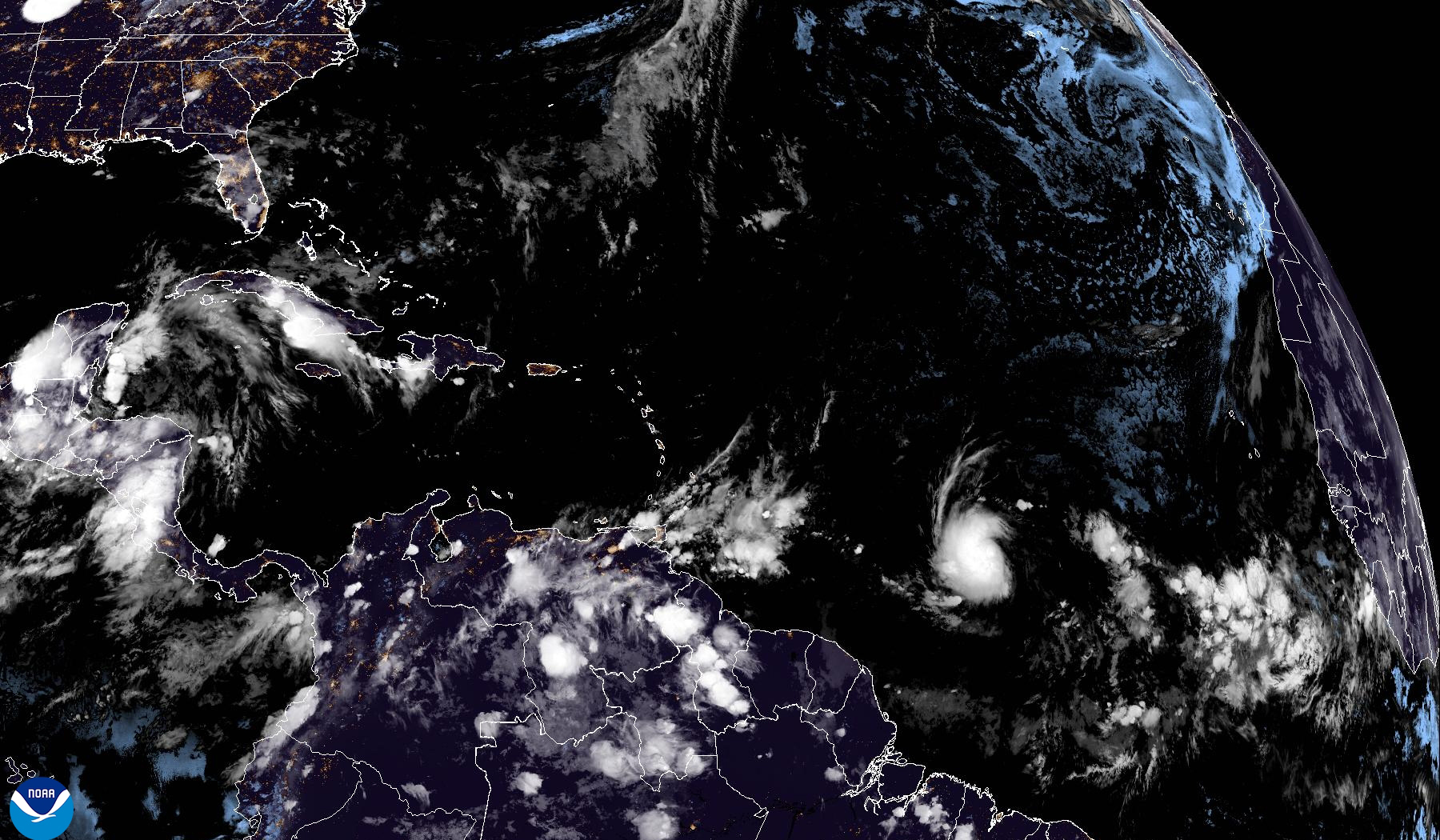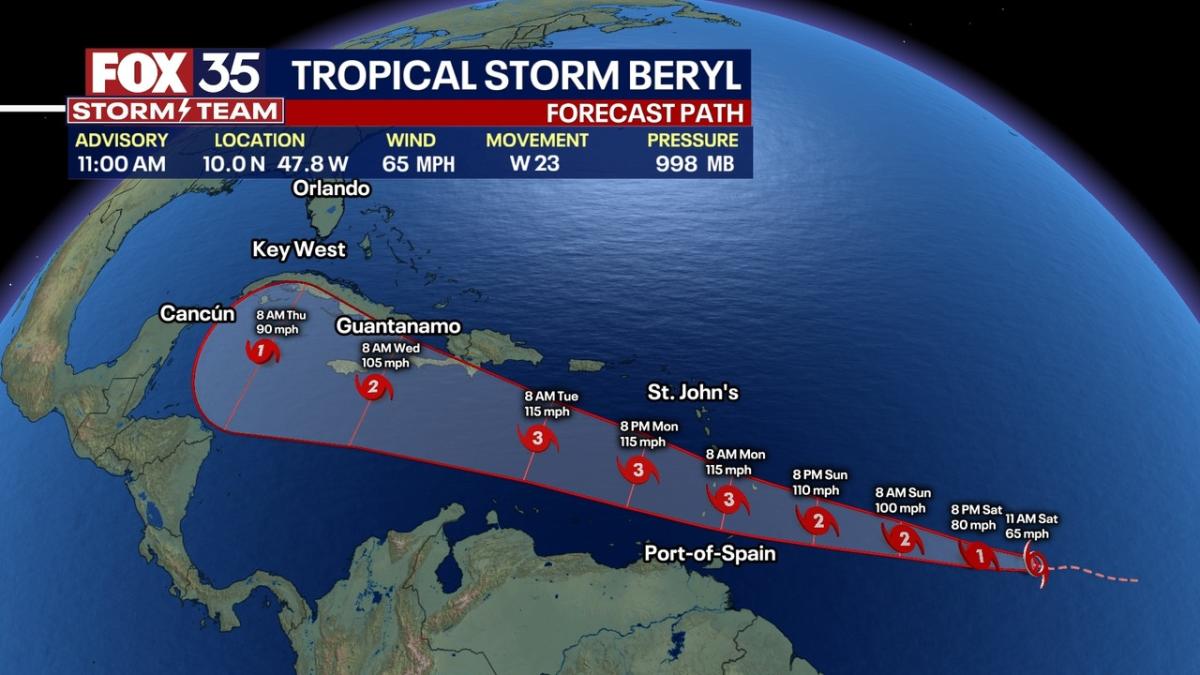NHC Beryl’s Path and Intensity
NHC Beryl, a Category 3 hurricane, formed from a tropical wave on July 18, 2018, in the Atlantic Ocean. The storm rapidly intensified, reaching Category 3 status within 24 hours. Beryl made landfall in Florida on July 20, bringing heavy rainfall and strong winds to the area.
Nuhcu beryl deh wan stohm deh mek big trobol foh di Caribben. Di stohm don pas tru Puerto Rico, weh deh feel di lash bad. Yuh kin check beryl puerto rico foh mo info. Nuhcu beryl a stil a move, suh wi a watch it close.
Storm’s Path and Impact
Beryl’s path took it from the Atlantic Ocean, across the Bahamas, and into Florida. The storm made landfall near Jacksonville, Florida, with maximum sustained winds of 115 mph. Beryl weakened as it moved inland, but still brought heavy rainfall and flooding to the southeastern United States.
NHC Beryl has intensified to a Category 1 hurricane, and its projected path is expected to bring heavy rainfall to the Caribbean islands. For the latest updates on Beryl’s projected path, visit beryl projected path. The NHC is closely monitoring Beryl’s progress and will provide regular updates as the storm approaches.
Factors Influencing Beryl’s Intensity and Movement
Several factors influenced Beryl’s intensity and movement, including:
- Warm ocean waters: The warm waters of the Atlantic Ocean provided the energy that fueled Beryl’s development and intensification.
- Favorable wind patterns: Favorable wind patterns allowed Beryl to maintain its organization and strength as it moved across the Atlantic.
- Interaction with land: As Beryl approached land, it began to weaken due to friction with the land surface.
Impacts of NHC Beryl

NHC Beryl’s destructive force left a trail of devastation across its path, impacting communities and ecosystems alike.
Infrastructure was severely damaged, with power outages affecting millions, roads and bridges rendered impassable, and buildings reduced to rubble. Critical services were disrupted, leaving residents without access to clean water, electricity, and communication.
Impacted Communities
Some of the hardest-hit communities included:
- Dominica: The island nation suffered catastrophic damage, with entire villages destroyed and thousands left homeless.
- Puerto Rico: The storm caused widespread flooding and landslides, leaving many areas inaccessible and disrupting daily life.
- U.S. Virgin Islands: The islands experienced significant infrastructure damage and power outages, affecting tourism and livelihoods.
Economic and Social Consequences
The economic impact of NHC Beryl was substantial, with losses estimated in the billions of dollars. Businesses were forced to close, tourism was disrupted, and agricultural crops were destroyed. The storm also had a significant social impact, displacing residents, disrupting education, and straining healthcare systems.
In the aftermath of the storm, communities faced challenges in rebuilding and recovering. Access to essential services remained a concern, and the long-term effects on the local economy and livelihoods were yet to be fully understood.
Response and Recovery Efforts: Nhc Beryl
Emergency response measures during and after NHC Beryl included evacuation orders, search and rescue operations, and the deployment of emergency personnel and resources.
These efforts were generally effective in mitigating the storm’s impact and providing assistance to affected areas. Evacuations helped to reduce the number of casualties, while search and rescue operations saved lives and provided essential aid to those in need.
Lessons Learned and Improvements, Nhc beryl
However, there are always lessons to be learned from any disaster response. In the case of NHC Beryl, one important lesson was the need for better communication and coordination between different agencies and organizations involved in the response effort.
Another lesson was the need for more robust infrastructure to withstand the impacts of future storms. This includes building stronger seawalls and levees, as well as improving drainage systems to prevent flooding.
By learning from the experiences of NHC Beryl, we can improve our preparedness and response capabilities for future hurricanes.
